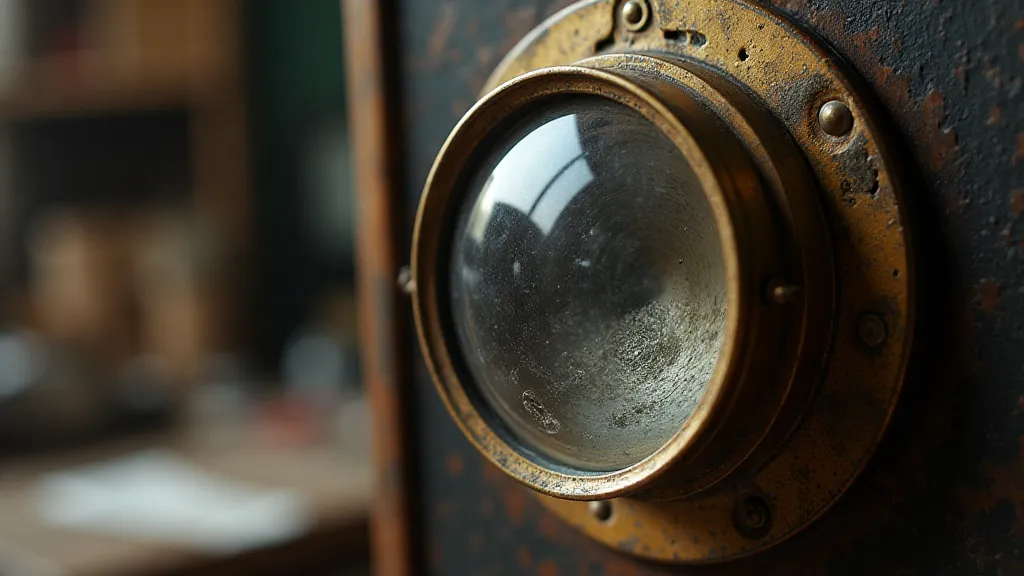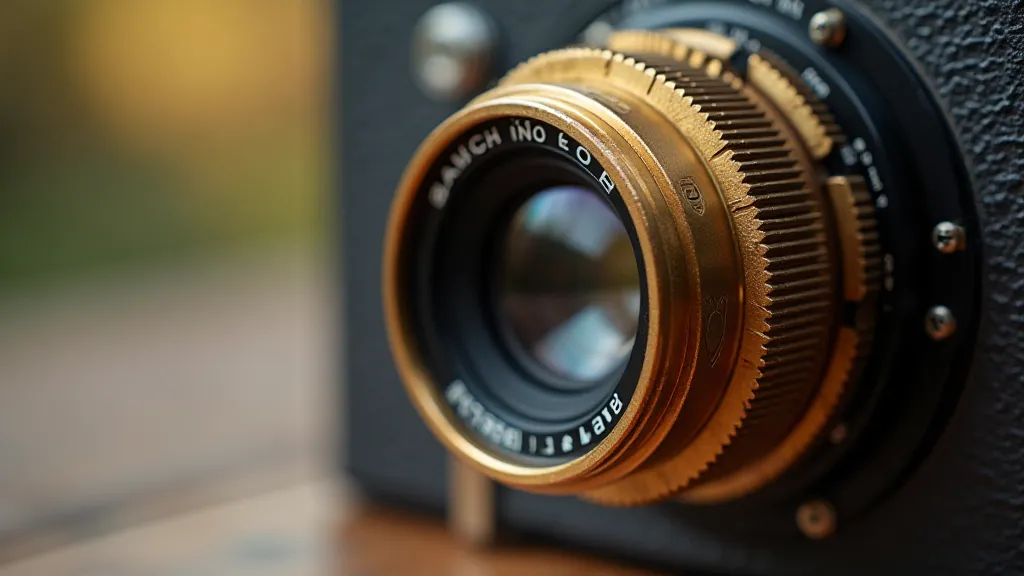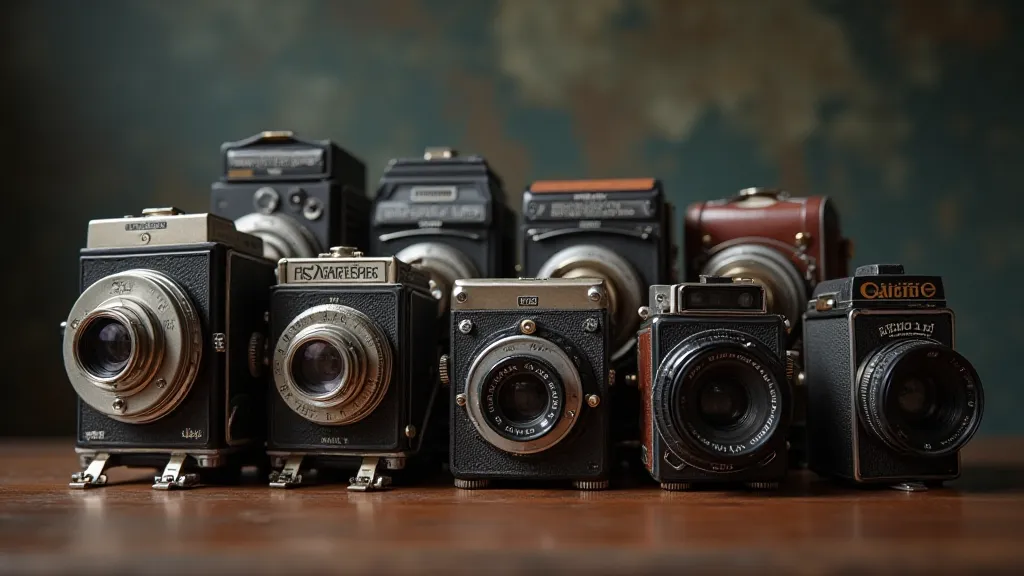The Alchemy of Light: How Early Lens Design Shapes Perception
There’s a peculiar magic in handling an antique camera. It’s more than just the weight of brass and leather in your hands; it's a palpable connection to a time when light itself was a precious commodity, meticulously captured and rendered. We, as modern photographers, often take for granted the razor-sharp images produced by digital sensors and complex, multi-element lenses. But to truly appreciate what we have, we must journey back to an era when lenses were simpler, often flawed, and profoundly shaped how photographers saw – and interpreted – the world.
The history of photography is, in many ways, the history of lens design. Early cameras, particularly those from the mid-19th century, weren't just tools; they were experiments. The very concept of “accurate” representation was still being defined. The earliest photographic lenses were typically single-element lenses made from glass, often flawed and prone to distortions like chromatic aberration (color fringing) and spherical aberration (blurriness). While these imperfections might seem like liabilities, they ultimately contributed to a unique aesthetic – a softness, a dreamlike quality – that is highly sought after by collectors and admirers of vintage photography today.

The Petzval Lens and the Romantic Vision
Perhaps the most pivotal early lens design was the Petzval lens, invented by Joseph Petzval in 1840. Before the Petzval, achieving a wide aperture (a large opening in the lens) was incredibly difficult. A wide aperture allows for shorter exposure times and the ability to isolate subjects with a shallow depth of field – a crucial element for portraiture. The Petzval lens, by cleverly arranging a positive and negative lens element, allowed for significantly wider apertures than previously possible, often around f/4 or f/6.
This breakthrough wasn't just a technical achievement; it profoundly influenced the aesthetic of early portrait photography. Photographers like Nadar and Julia Margaret Cameron embraced the Petzval’s characteristic “swirl” – the soft focus and slightly distorted edges that rendered subjects with a dreamlike, almost ethereal quality. Cameron, in particular, was notorious for deliberately softening her lenses even further, often wrapping them in fabric or gauze to create a painterly effect. Her portraits, with their hazy edges and romantic lighting, are instantly recognizable and continue to inspire artists today. They weren't striving for scientific accuracy; they were crafting emotional resonance. Holding a camera like her bellows camera, feeling the resistance of the leather, is to almost physically connect to her creative process. The imperfections, the limits – they were not obstacles, but collaborators.
The Rise of Achromats and the Quest for Sharpness
As photography matured, so too did the demand for sharper, more accurate images. This led to the development of achromatic lenses, which corrected for chromatic aberration by combining different types of glass. While still relatively simple compared to modern lenses, achromatic lenses represented a significant improvement in image quality. Cameras employing these lenses, like the Thornton-Laundy Mark IV, which popularized roll film, began to capture a more "realistic" view of the world.
The shift wasn't universally embraced. Some photographers felt that the quest for sharpness diminished the artistic possibilities of photography. They believed that the "imperfections" of earlier lenses contributed to a unique aesthetic that was lost with the advent of more "perfect" optics. The debate between artistic expression and technical accuracy continues to this day, highlighting the complex relationship between tools and creativity.
The Bausch & Lomb Landscape Lens and the American West
The late 19th century saw a boom in landscape photography, particularly in the American West. Photographers like William Henry Jackson relied on reliable and relatively sharp lenses to document the vast and dramatic scenery. The Bausch & Lomb Landscape lens, a well-regarded design of the era, became a staple for these expeditions. It offered a balance of sharpness and relatively low distortion, making it well-suited for capturing sweeping vistas.
Imagine the challenges faced by these early photographers: carrying heavy equipment across rugged terrain, dealing with unpredictable weather, and relying on long exposure times. Their photographs weren't just records of the landscape; they were testaments to perseverance, ingenuity, and a deep appreciation for the natural world. Looking at a photograph taken with a Bausch & Lomb Landscape lens, one can almost feel the crisp mountain air and the vastness of the American frontier.

The Enduring Legacy of Imperfection
The antique cameras we collect today aren’s just relics of a bygone era; they are tangible links to a pivotal moment in history. They remind us that technology is not always about achieving perfect replication; sometimes, it's about embracing limitations and finding beauty in imperfection. The soft focus, the color fringing, the distortions – these aren't flaws; they are characteristics. They are part of the story.
The lenses of these early cameras fundamentally altered how photographers perceived and rendered reality. They shaped artistic vision and established aesthetic preferences that continue to influence photography today. The quest for technical perfection has undeniably brought us incredible advancements in image quality, but it’s equally important to remember and appreciate the unique and captivating beauty of the alchemy of light as practiced by the pioneers of photography.
Many collectors find themselves drawn to specific camera models, not just for their historical significance, but for the aesthetic "signature" of their lenses. A camera with a Petzval lens offers a distinctly romantic feel, while a camera with a Bausch & Lomb Landscape lens promises a clarity and sharpness reminiscent of the American West. It’s a journey of discovery – a chance to connect with the past and to appreciate the art of seeing.






